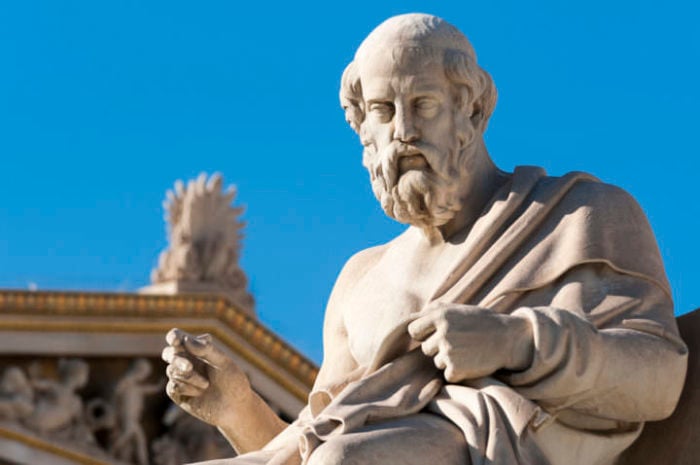Plato’s Best (and Worst) Ideas Will Surprise You

Plato was one of the most influential thinkers in the history philosophy. Plato’s concepts are laid the groundwork for Ancient Greek and western philosophy, and are still considered immensely influential to this day. His contributions are easily recognizable across education, politics, ethics, epistemology, and psychology. 20th century thinker Alfred North Whitehead once described European philosophy as “a series of footnotes to Plato.” While many of Plato’s concepts are undeniably crucial for the progression of western philosophy, some of his ideas have not aged as well. Let’s take a look inside some of the best and worst ideas found in Plato’s philosophy.
Plato’s best ideas
The theory of forms
Plato establishes a significant difference between what we can perceive through the senses and what we can perceive through reason. He describes the latter as “forms.”
For Plato, “forms” combined with language create the basis of scientific knowledge.
Plato believes that the phenomena we perceive with the senses are the constant changes of the ideal “forms” that can only be perceived with reason. In Plato’s world there is a universal, singular “ideal” of a structure like a house, and the houses that we see in our daily experience are only tangible manifestations of that ideal–manifestations that are subject to change.
Plato urged philosophers to try to understand the ideal world. What we can perceive with our senses never remains, while in the world of ideas and “forms” everything is immutable and eternal, like the soul.
This is why Plato invents the moniker of the “philosopher king.” He believed that a ruler should have the intellectual prowess of a thinker in order to govern correctly.
Plato traveled twice to Syracuse, Sicily, to try to put his philosophical project into practice and demonstrate that it was a viable form of governance. He was met with opposition, however, and secretly fleed back to Greece.
Plato’s worst ideas
Plato has extremely mixed and inconsistent views on how women would function within governing systems. Although he believed that women were just and could assist in governmental processes, he also compared them to children.
Plato also derided women’s biology as affecting their aptitude to think logically, saying that their bodies were similar to a “rebellious animal without reason” driven by its appetite. He defined the female reproductive system as an “animal eager to procreate.”
For Plato the female body had a life of its own: “if the uterus remains for a long time without producing fruit; it becomes irritated and wanders throughout the body, closes the air passage, prevents breathing, puts the body in danger and engenders a thousand diseases.”
Such misguided ideas about the female body were widespread amongst thinkers of the time. Even Hippocrates, the father of modern medicine, wrote in his “Treatise on Women’s Diseases” about something he called “hysterical suffocation”; a respiratory disease that appeared when the uterus migrated to the upper abdomen in search of fluid.
“Featherless bipeds”
One of Plato’s ideas that completely missed the mark was his attempt to categorize humans with birds, dubbing them “featherless bipeds,”
According to leged, Diogenes of Sinope, the famous “cynic” of Ancient Greece, became angry with Plato’s classification that compared men to birds. Diogenes decided to pluck a rooster and take it to one of Plato’s classes where he proclaimed “here is Plato’s man.”
Plato’s logic for associating humans with birds was both being’s ability to master coordinated movement.
Platonic Academy of Athens
The Platonic Academy of Athens was founded by Plato around 387 BC. The academy was destroyed during the first war between Greece and Asia Minor and was subsequently rebuilt in 410 AD. The Academy was eventually closed for good by the Emperor Justinian in 529 AD. The school was dedicated to the study of knowledge, mathematics, medicine, rhetoric and astronomy.
The platonic academy had three great periods:
- The ancient academy, made up of the disciples closest to Plato until 260 BC. They closely followed school of thought invented by their teacher: that knowledge is based on justified, true beliefs.
- Middle Academy, founded in 244 BC. It was characterized by returning to the thought of Socrates, constituting a new distance from the original thought of Plato. Irony, skepticism, doubt and interrogation dominated.
- New Academy, from 160 BC. Represented by Carnéades and Philo of Larisa; this iteration of the academy taught that one cannot have definitive knowledge of what an outcome will be: it is impossible to have total certainty or uncertainty.
Plato’s most famous student was Aristotle.



Δεν υπάρχουν σχόλια:
Δημοσίευση σχολίου